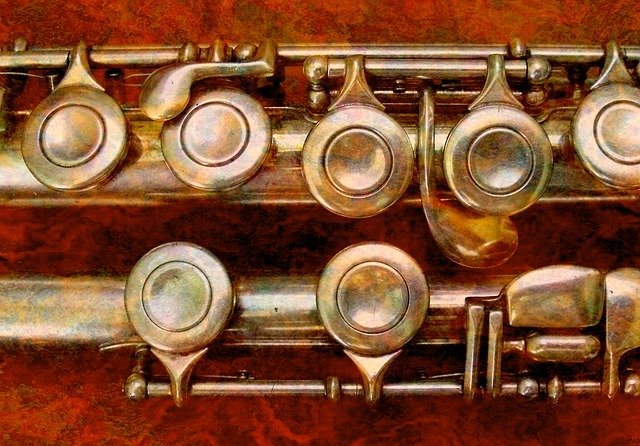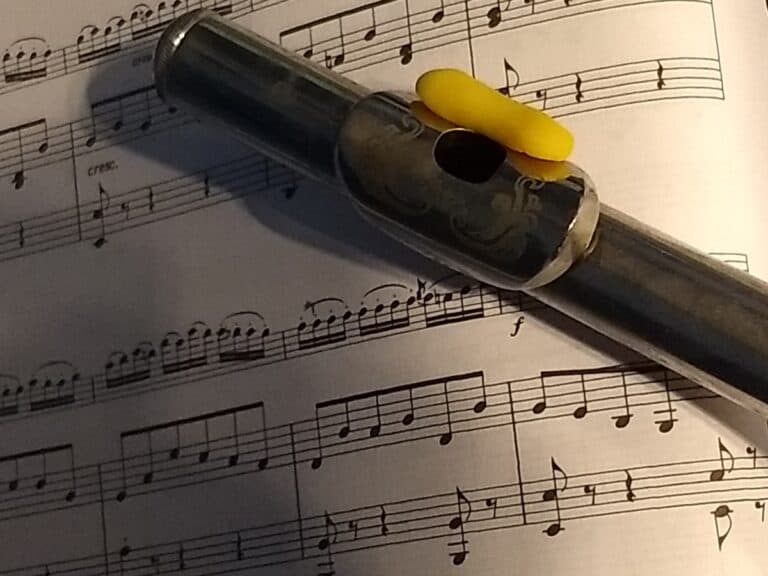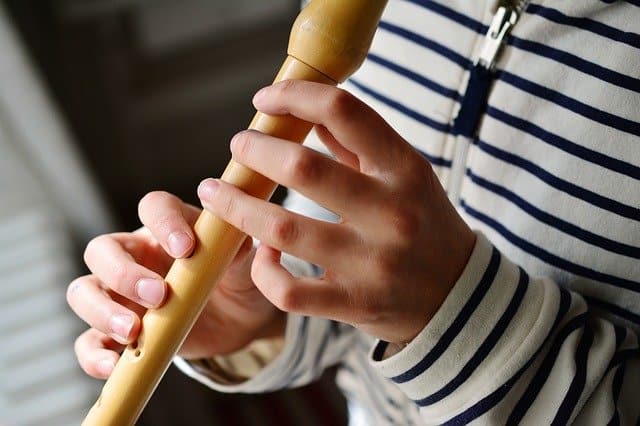How to Teach Yourself Flute
Learning an instrument is difficult, and it becomes significantly more difficult to learn an instrument without the help of a teacher. The flute is no exception. Without a teacher, one runs the risk of developing bad habits while playing which interfere with one’s ability to reach their full musical potential.
Even so, many people who want to learn the flute have no access to a teacher, and so have no choice but to teach themselves. It is this group that I hope to help in this article.
Can you teach yourself flute?
The question first needs to be answered as to whether or not trying to learn flute by oneself is even a worthwhile pursuit. In short:
You can absolutely teach yourself flute, and it will be much easier if you work out of a high quality method book (such as those by Trevor Wye) and seek out other online resources created by flute professionals. Taking a few lessons at the beginning of the learning process will also help immensely.
In other words, trying to be a purely self-taught flutist is not something I would recommend if you are able to obtain lessons, but it is certainly possible and feasible. If you are trying to teach yourself, you will have to pull information from sources other than a teacher.
Also, lessons are generally most helpful at the beginning of the learning process. It is easy to form bad habits on an instrument, and a teacher can help prevent those bad habits from ever developing. So, if you can take even a few lessons at first, that will help you to self-teach in the future.
Even if you can’t take lessons, however, I am always of the opinion that it is worthwhile to try learning an instrument anyways, just through practice and research. If this is your goal, I have a few tips for you.
Tip #1: Work out of a high-quality method book
Method books are no substitute for a teacher because they do not give feedback of any kind. However, high-quality method books often contain all the wisdom that a teacher might offer. If you can apply this knowledge and implement it into your practice, it will take you a long way.
The emphasis here is on a high-quality method book. It should be one that’s written by reputable flutists. My personal recommendation is Trevor Wye’s Practice Books for the Flute. They contain lots of details on how to practice, as well as all the warm-ups and harmonics exercises that you will ever need. Trevor Wye has a variety of other books for the flute as well, and all of them are gold.
Having a good method book that you know has high-quality information makes the process of self-teaching much easier. It can often be difficult to distinguish high-quality information from low-quality information if you are learning solely from the internet and having a method book eliminates much of that pressure.
Tip #2: Emphasize scales, harmonics, and long tones
What you practice obviously plays a large role in how quickly you improve. I find that scales, harmonics, and long tones combined are helpful in developing all the technical abilities that are needed to play the flute.
Harmonics are important for getting the hang of the upper register. They are, in my opinion, one of the fastest ways to learn to consistently hit high notes. The upper register of the flute is used much more commonly in music than the lower register, so it is important to have a solid exercise to teach you to get the hang of these.
You can find harmonics exercises in the Trevor Wye book I recommended. Even if you don’t have that book, however, you can still practice harmonics. Just finger a low note (such as low C or low D) while using your lips and airstream to play a pitch that is higher than what you are fingering. For instance, fingering a low C should also allow you to hit the C above it (a C5) and the G above that (G5). Practicing this will help you hit the high notes when you are actually using the proper fingering.
As for scales, I recommend practicing them over your full range. If you are playing a C major scale, for instance, do not simply play the scale from a low C to a high C. Start on the low C if you can play it, and then play the scale up to the highest note you can play that is still within the key of C major. The highest note on the flute, not counting the altissimo register, is generally considered to be a D7. D is within the key of C major, so I recommend playing all the way up to a D7 for the C major scale if you are able.
Also, make sure you play your scales in every major key until you’ve mastered all of them. Once you are comfortable with those, continue practicing them and add the minor scales on top of them. Playing scales on a regular basis will give you the finger dexterity and muscle memory to handle any complex musical passage which might be thrown your way. In fact, you should aim to memorize them – this is the only way to ensure that they are truly cemented in your muscle memory.
Long tones are what you should use to improve your intonation and the quality of your sound. Grab a tuner, and then practice holding notes for an extended period of time. You’ll especially want to emphasize notes B4 (line in the middle of the staff) and lower. These are typically the most stable notes on the flute, and perfecting them will give you a good foundation for your tone quality on all other notes.
Make sure that you are also checking the tuner for whether each pitch is sharp or flat. Get in the habit of using your airstream to adjust the pitch upward or downward as needed.
Tip #3: Listen to professional flutists
You can’t sound good on the flute unless you first know what a good flutist sounds like. Every flutist sounds different, of course, but as you listen to more professional flutists, you will get a better sense for how you should sound, and for what kind of sound you would like to have.
So, my recommendation is to get yourself over to YouTube or Spotify and start finding recordings of professional flutists. Sir James Galway, Jasmine Choi, Carol Wincenc, Emmanuel Pahud and Sharon Bezaly are all excellent flutists that have many recordings on YouTube that you can use as a reference.
Listen to as many professional flutists as you can, and try to get a sense of what makes each of their sounds unique and different from each other’s. If you can do this, then you will develop a good sense of what a flute should sound like and you will be better able to model your own sound.
Tip #4: Watch professional flutists
Getting a sense of good tone quality isn’t the only way that you can benefit from following professional flutists. If you can find recordings which have video as well as audio (and there are plenty) then you can watch for body posture and how they hold the flute.
There are lots of ways to go wrong with how you hold the flute and how you carry yourself while playing (you can find our guide on how to hold the flute here), and watching how the professionals do it is a great way to learn.
So, look up all the flutists I mentioned earlier and watch their hand position and posture. It may also be worthwhile to look carefully at their lips and embouchure.
Tip #5: Practice slowly and methodically
I told you what to practice earlier, but how you do it is just as important.
The first thing to understand is that you should never practice unless you truly want to. It isn’t worthwhile to try to force yourself into practicing – it won’t be productive unless you actually feel like doing it. To that end, having the desire to play flute is extremely important. If you don’t really want to play it, then it isn’t worth doing.
If you do want to practice, then you should do so in a methodical and deliberate way. Have a metronome and tuner at all times, almost irregardless of what you are playing. Check your pitch, and use the metronome to make sure that you are playing evenly. Start out at a slow tempo, and don’t increase the tempo until you can play the material slowly.
Whatever it is you are practicing, it is best to focus on doing it in small chunks. After learning a chunk of music or a scale, move on to something else and give your memory time to consolidate what you’ve learned. So, focus on playing one scale as well as you can per day. The next day, even if you haven’t mastered the first scale, move on to a different one. If you give your memory time to process the information, you may find that you learn it more effectively.
Tip #6: Be hyper aware of any pain or tension
If you are a self-learner with no teacher, then you don’t have anyone to point out to you when some part of your body is contorted in a way that it shouldn’t be.
You may think that this is unlikely, but it happens more often than you would expect. This is especially true for beginners. Beginners will often bend their wrists too much while playing, or might even bend their neck in some unnatural way.
Aside from this being bad for one’s sound, it can also cause pain and injury if done in excess. It is worthwhile to practice mindfulness as you play. If you feel pain at any point, it is best to be aware of it and change your body position to eliminate the pain.
You may not always be aware of pain the moment you start to feel it. It can build up slowly without notice until it becomes problematic. When playing an instrument, therefore, it is important to be attentive to pain.
The same goes for tension. Tension can often become pain. In any case, tension kills sound, and all musicians sound better when they are free of it.
Just being aware of your body as you play can go a long way.
Tip #7: Know the most common mistakes on flute
If you are going to be teaching yourself, then you won’t have anyone to point out your mistakes to you. You’ll have to spot the mistakes yourself. It is useful, then, to know what the most common flute mistakes are, so that you can watch and correct for them as they arise.
For instance:
- Many beginners tend to accidentally roll their flute inward as they play. This leads them to eventually become flat without noticing. This can be corrected by consciously rolling out and having a tuner out as you play.
- Beginners commonly breath from their chest. This leads to shallow breathing which doesn’t support the sound of the flute. It is better to breathe from the diaphragm, located in the stomach area. If this isn’t something you know how to do, try breathing normally while lying down. Most people only breathe from the diaphragm while lying down, and the goal is to make this way of breathing the default.
- The “smiling embouchure” is common among beginners and also doesn’t lead to a good sound.
- Don’t press the keys down too hard; you should have a light touch.
These are just a few of the mistakes which I find tend to be most common. In actuality, there are many such mistakes, and it may be beneficial to research from a variety of sources to find as many of them as you can!
Tip #8: Practice with a mirror
Earlier, I talked about how it is worthwhile to watch professional flutists to learn more about body posture. It is also beneficial to watch yourself.
Looking at yourself in a mirror as you play can make it much easier to spot tension when you otherwise would be inclined to ignore it. Looking relaxed often goes hand-in-hand with being relaxed, and I find I’ve managed to improve a fair amount just by watching myself as I play.
It is best if the mirror is tall enough to allow you to see your entire body.
Conclusion
As I’ve said before, self-teaching is not my preferred method for learning an instrument. However, I do think it can be effective with the right techniques.
By the way, this website has a lot of information on learning the flute. If you found this article at all helpful, I hope you’ll look over our other articles and find value in those as well.
Otherwise, good luck on your flute-learning journey!






